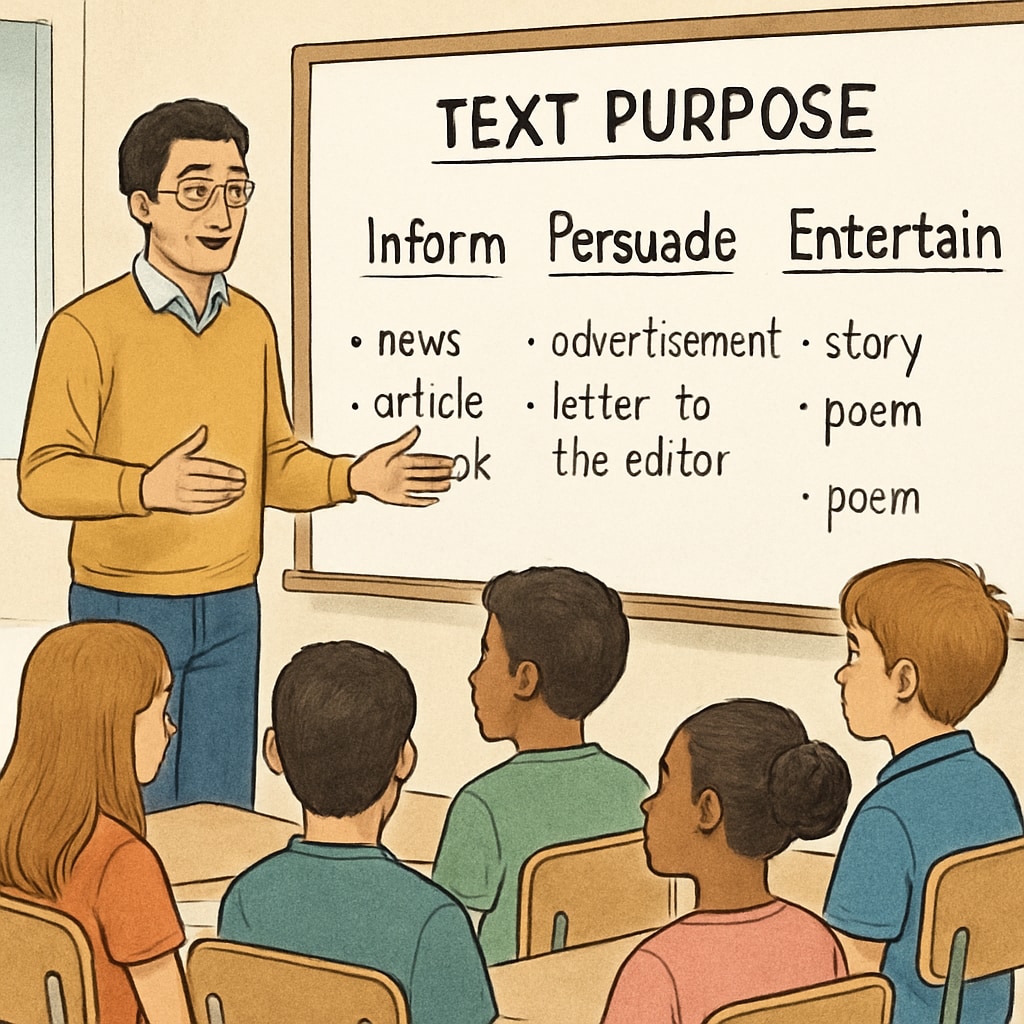In K12 education, mastering Functional English, reading comprehension, and text purpose is essential for academic success. However, many students struggle with identifying the purpose of different texts during secondary-level reading tests. Whether the text is informational, explanatory, or persuasive, understanding its intent can feel like navigating a maze. This article dives into common challenges faced by learners, explores practical strategies for text classification, and provides guidance for teachers to enhance classroom instruction.
Why Identifying Text Purpose Matters
Recognizing the purpose of a text is foundational to reading comprehension. Texts generally fall into three main categories:
- Informational: Designed to convey facts or data, such as news articles or encyclopedias.
- Explanatory: Aimed at clarifying concepts or processes, such as manuals or tutorials.
- Persuasive: Created to influence opinions or motivate action, such as advertisements or opinion pieces.
Students often confuse these categories, especially when texts overlap in style or tone. For example, an informational article may subtly include persuasive elements, making it harder to distinguish its primary intent.

Practical Strategies for Text Purpose Identification
To help students determine the purpose of a text, educators can encourage them to focus on key elements such as tone, word choice, and structure. Here are actionable strategies:
- Ask guiding questions: What is the author trying to achieve? Is the text meant to inform, explain, or convince?
- Analyze keywords: Look for clues in the language used. Informational texts often use neutral and factual language, while persuasive texts may use emotionally charged words.
- Examine the structure: Informational texts often have headings and lists, explanatory texts may include step-by-step instructions, and persuasive texts feature arguments and calls to action.
By applying these techniques, students can develop a systematic approach to text analysis.

Teaching Tips for Educators
Teachers play a crucial role in helping students decode text purposes effectively. Here are some teaching tips:
- Use real-world examples: Incorporate diverse text samples from advertisements, news articles, and instruction manuals.
- Encourage group discussions: Collaborative analysis allows students to share perspectives and refine their understanding.
- Integrate technology: Use digital tools to create interactive exercises that classify text types.
In addition, educators can use formative assessments to monitor progress and adjust teaching methods accordingly.
Reading comprehension on Wikipedia offers additional insights into cognitive strategies, while Functional literacy on Britannica explores broader literacy skills that support text purpose identification.
Overcoming Common Misunderstandings
Despite rigorous instruction, students may still face difficulties, such as misinterpreting tone or overlooking subtle cues. To address these challenges, teachers should emphasize the importance of:
- Context: Understanding the background of the text’s creation.
- Practice: Regular exposure to varied text types to reinforce skills.
- Feedback: Providing clear and constructive feedback during assignments and tests.
As a result, students can build confidence and accuracy in identifying text purposes.
In conclusion, mastering Functional English reading comprehension and text purpose recognition requires both strategy and practice. By utilizing these methods, educators and students can navigate this complex skill with greater ease and success.


